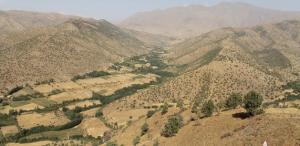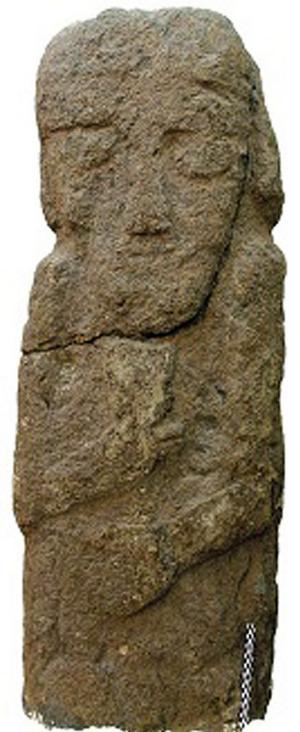Perkins is not a christian. If the day ever came that christians were rounded up, Perkins would have nothing to worry about…
Tony Perkins, who has previously and repeatedly said christians are being persecuted in this country, hasn’t changed his
tune with Hobby Lobby winning the right to persecute people they don’t
like.
Even fellow fake christian, Liberty Counsel’s Matt Barber, is willing to allow
that the SCOTUS ruling puts his fellow bigots in a very strong position
when it comes to persecuting imagined sinners. But Perkins is certain President Obama is going to start rounding up christians any day now.
Perkins, who has previously said that wingnut christians have more rights than other christians, told Faux News’ Todd Starnes on Washington Watch this weekend that,
I do think that it
could very well come to that in our lifetime. A few years ago I didn’t
think it would, not this quickly, but as we have seen the aggressive
nature of this administration and this president and the open hostility
of this administration toward orthodox faith – we have seen it in the
HHS mandate, we have seen it in the numerous cases regarding marriage – I
think it is going to come down to that.
I suppose Perkins could be right if he goads his
misguided followers into some very un-christian and anti-jesus civil
disobedience, which is precisely what he called for in the wake of marriage equality bans being struck down in Indiana and Utah.
The christians, you remember, are supposed to turn the
other cheek. jesus didn’t tell them to get out and engage in civil
disobedience, but to love their enemies and turn the other cheek. He was
very clear on this point. A point Perkins seems determined to ignore.
How can you be a christian – a follower of the christ, the messiah – if you don’t listen to what the christ wants you to do?
Good question. Perkins’ solution is to simply
pretend jesus never existed. jesus is just a name, a weapon to be
wielded in his pet and quite often, un-christian causes.
Paradoxically, Perkins is big on the whole
“orthodoxy” thing, which is interesting, given that he is not himself
orthodox in his views. Orthodox comes from the Greek, “right opinion” –
right opinion, not surprisingly, being determined by the majority.
Heresy, also unsurprisingly, also from the Greek, means “choice” which
in a totalitarian regime, is, of course, a bad thing. Heretics have made
a choice to deviate from what the majority says. You do see where this
is going, don’t you?
The problem for Tony Perkins is that he is not in
the majority. The majority is dead set against him. Yet here is Perkins,
the fake christian, berating the majority as “supposed” christians
because they support LGBT rights.
Better sit down before you
read this example of Perkins bearing false witness in contravention of the ten commandments he pretends to defend:
A straightforward
reading of the bible shows that since the beginning god held human life
to be sacred, and values human life, no matter the stage,” Perkins says.
“I imagine that christians, supposed or true, who support Planned
Parenthood either do not fully understand what abortion is, what its
physical and emotional consequences are or what Planned Parenthood as an
organization actually stands for and advocates.
Oh dear. I don’t know what bible Perkins is reading but mine doesn’t read like that at all.
Obviously, as I have shown here before, the god of
the old testament shows no value for human life whatsoever, and examples
abound. I will provide a couple of brief examples here to demonstrate
how “god held human life to be sacred, and values human life, no matter
the stage”:
While Israel was
staying in Shittim, the men began to indulge in sexual immorality with
Moabite women, who invited them to the sacrifices to their gods. The
people ate the sacrificial meal and bowed down before these gods. So
Israel yoked themselves to the Baal of Peor. And the lord’s anger burned
against them.
The lord said to moses, “Take all the leaders of these people, kill them and expose them in broad daylight before the lord, so that the lord’s fierce anger may turn away from Israel.”
So moses said to Israel’s judges, “Each of you must
put to death those of your people who have yoked themselves to the Baal
of Peor” (Numbers 25: 1-5).
And here is a nice example of valuing life:
Suppose you hear in one
of the towns the lord your god is giving you that some worthless rabble
among you have led their fellow citizens astray by encouraging them to
worship foreign gods. In such cases, you must examine the facts
carefully. If you find it is true and can prove that such a detestable
act has occurred among you, you must attack that town and completely destroy all its inhabitants, as well as all the livestock.
Then you must pile all the plunder in the middle of the street and
burn it. Put the entire town to the torch as a burnt offering to the lord your god. That town must remain a ruin forever; it may never be
rebuilt. Keep none of the plunder that has been set apart for
destruction. Then the lord will turn from his fierce anger and be
merciful to you. He will have compassion on you and make you a great
nation, just as he solemnly promised your ancestors. “The lord your god
will be merciful only if you obey him and keep all the commands I am
giving you today, doing what is pleasing to him.” (Deuteronomy
13:13-19)
Not only people – all people, men, women, children,
and obviously then, unborn children – but animals as well. Dead. All of
them. Kill for god by god’s command.
I am having a difficult time finding that value for human life Perkins spoke of.
On the other hand, I am having no difficulty at all
in determining that Tony Perkins is a liar. Perkins speaks dishonestly
of the “disdain for the rule of law promoted by the Obama
administration” but his own disdain of jesus’ will is the true sin here.
Let’s be clear: Tony Perkins is not a christian. Not
to put too fine a point upon it, but if the day ever came that christians were rounded up, if they start “rolling out the boxcars” as
Perkins tastelessly claims
in comparing the non-persecution of christians in the U.S. to the
murder of millions of jews in the Third Reich, Perkins would have
nothing to worry about, because it will be fake christians like him
driving the trains.












 Alastair Bonnetts's Unruly Places: Lost Spaces, Secret Cities, and Other Inscrutable Geographies
explores the most extraordinary, off-grid, offbeat places on the
planet—unlikely micro-nations, moving villages, secret cities, and no
man’s lands—from surprising new vantage points. It's available from
Amazon.
Alastair Bonnetts's Unruly Places: Lost Spaces, Secret Cities, and Other Inscrutable Geographies
explores the most extraordinary, off-grid, offbeat places on the
planet—unlikely micro-nations, moving villages, secret cities, and no
man’s lands—from surprising new vantage points. It's available from
Amazon.


















